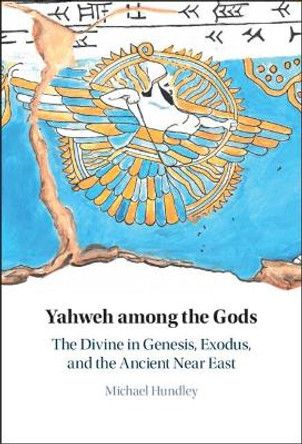In Moses among the Idols: Mediators of the Divine in the Ancient Near East, Balogh simultaneously redefines one of the greatest figures in the history of religion and challenges the historically popular understanding of ancient Mesopotamian idols as the idle objects of antiquated faiths. Drawing on interdisciplinary research and methods of comparison, Balogh not only offers new insight into the lives of idols as active mediators between humanity and divinity, she also makes the case that when it comes to understanding the figure of Moses, Mesopotamian idols are the best analogy that the ancient Near East provides. This new understanding of Moses, idols, and the interplay between the two on the stage of history and within the biblical text has been made possible only with the recent publication of pertinent texts from ancient Mesopotamia. Drawing from the fields of Assyriology, biblical studies, comparative religion, and archaeology, Balogh identifies a problem with Moses's status, and offers an unexpected solution to that problem. Moses among the Idols centers on the question: What is it that transforms Moses from an inadequate representative of Yahweh who is "uncircumcised of lips" to "god to Pharaoh" (Exodus 6:28-7:1)? In this moment, Moses undergoes a status change best understood through comparison with the induction ritual for ancient Mesopotamian idols as described in the texts of the Mis Pi, "Washing" or "Purification of the Mouth." This solution to the problem of Moses's status explains not only his status change, but also why Moses radiates light after speaking with YHWH (Exod 34:29-35), and his peculiar relationship with YHWH and people of Israel. The comparative, interdisciplinary perspective provided by Balogh allows one to read these and other millennia-old interpretive issues anew, and to do so in a way that underscores the contribution of in-depth comparison to our understanding of ancient civilizations, texts, and intellectual frameworks.
About the AuthorAmy L. Balogh is program manager at the University of Denver's Center for Judaic Studies and adjunct lecturer for the Department of Religious Studies. She also teaches at Colorado College and Regis University.
ReviewsBalogh's book is generated by the shift in Moses' status from one who is "uncircumcised of lips" to one who is "god to Pharaoh." She casts her eye eastward, to Mesopotamia, and particularly to the texts about enlivening the cult statue known as the cleansing and opening of the mouth rituals. The resulting investigation is creative and generative on a number of fronts: the understanding of Moses' role as mediator, for example, his radiant face, and his function as "Yhwh's idol." Even the etymology of the name Mosheh is reconsidered in this intriguing study, which concludes-not without some irony-that Moses' comparison to an idol is a way to describe him as "the most elevated of human beings." -- Brent A. Strawn, Professor of Old Testament, Emory University
Book InformationISBN 9781978700307
Author Amy L. BaloghFormat Hardback
Page Count 232
Imprint Lexington Books/Fortress AcademicPublisher Rowman & Littlefield
Weight(grams) 658g
Dimensions(mm) 231mm * 158mm * 24mm










